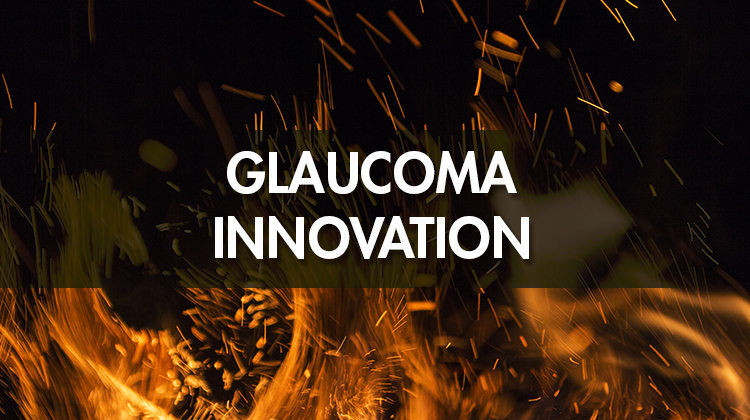What’s Behind the Heat-up in Glaucoma Innovation

Kicking off the sixth annual Glaucoma 360-New Horizons Forum held recently in San Francisco, co-founder and co-chair Adrienne Graves boldly proclaimed, “Glaucoma is hot.”
However, over the past few years, glaucoma has been anything but hot. Stone cold may be more like it. Innovation had been sorely lacking and the $5 billion annual global market has stagnated. Since 1996, when the prostaglandin drug latanoprost gained FDA clearance, no significant new chemical entities (NCEs) have been introduced. The device side had also languished, with older technologies such as laser trabeculoplasty and dated surgical procedures (like trabeculectomy and shunts) being the mainstays in treating drug-resistant or non-compliant patients.
MIGS Brings the Heat
However, things have heated up recently. Three minimally invasive glaucoma surgical (MIGS) devices are now FDA-approved and competing in the marketplace. The first approved product, the iStent sold by MIGS pioneer Glaukos, has been hugely successful, with estimated 2016 sales of about $115 million. Glaukos’ current market valuation, indicative of the love fest Wall Street is having with MIGS, is now about $1.5 billion.
Recently joining Glaukos in the domestic MIGS market are the CyPass from Alcon and the XEN from Allergan. Transcend Medical initially developed the former before Alcon acquired it, while Aquesys developed the latter before its acquisition by Allergan.
And two new MIGS devices are on the horizon. Ivantis is slated to release its two-year follow-up pivotal trial results on its Hydrus stent at the American Academy of Ophthalmology meeting in November. FDA approval appears possible in 2018.
Meanwhile, enrollment in the pivotal trial for Santen’s MicroShunt is expected to be completed about mid-year, setting the stage for a possible 2019 FDA approval. Santen acquired the original developer of this device, InnFocus.
The MIGS market is clearly on the verge of explosive growth. Market Scope has predicted that it could reach $900 million (900,000 units) by 2021, up dramatically from $100 million (110,000 units) in 2016. Additionally, Market Scope is forecasting that the global glaucoma device market will soar from $354 million in 2015 to $1.1 billion in 2020. This represents a hefty compound annual growth rate of 26%.
Pharma’s Drought Over
On the pharma side, it appears that the long drought of NCEs will be ending in the next couple of years. Aerie Pharmaceuticals has developed two unique agents, the Rho kinase (ROCK) inhibitor Rhopressa and the Rhopressa-latanoprost combination Roclatan, both of which have demonstrated efficacy in reducing intraocular pressure. Both have multiple methods of action, working to repair the trabecular meshwork in addition to improving aqueous outflow and reducing fluid production within the eye. Very importantly, both feature once-a-day dosing.
NDAs are expected to be filed for both drugs in 2017. Wall Street analysts are predicting that these two products could ultimately generate global sales well in excess of $1 billion.
Addressing the well-acknowledged and dismal compliance rate for glaucoma medications, myriad firms globally are working to bring sustained-released drug delivery devices to the market. As reported at Glaucoma 360, the competitive list is long and the approaches (punctual plugs, implants, contact lenses) are numerous. It’s fair to say that sometime in the next few years, drug-delivery devices will be a key part of the glaucoma landscape.
Despite their huge promise, these drug-delivery platforms face significant challenges. At the Glaucoma 360-New Horizons Forum, a panel of drug-delivery experts raised several cogent points:
- For the ophthalmologist: (1) Will these devices really work as “advertised”? (2) And, how much extra chair time will it take to place the device and manage it over time?
- For the patient: (1) Will I experience discomfort or pain when the device is placed in or removed from the eye? (2) And, what about cosmesis; will the device be visible to others?
- For payers, the key issue revolves around the likely very high price of these devices and whether that will discourage them from providing coverage.
But at least innovative approaches to treating glaucoma are top of mind again as the chill comes off.
The Glaucoma 360-New Horizons Forum is sponsored by the non-profit, San Francisco-based Glaucoma Research Foundation (GRF).
Larry Haimovitch is president of Haimovitch Medical Technology Consultants, Mill Valley, CA.
Other Twitter Sources – @GlaucomaOrg / @GlaukosCorp / @Allergan / #AeriePharmaceuticals

